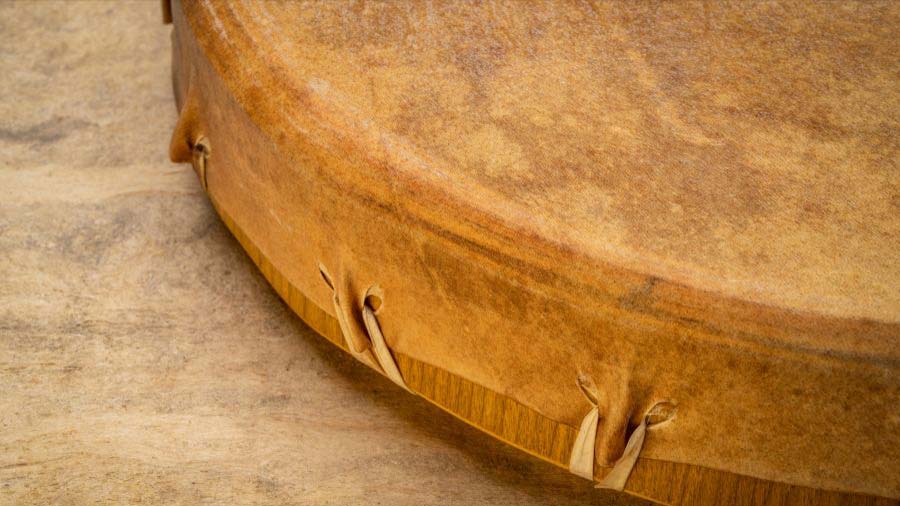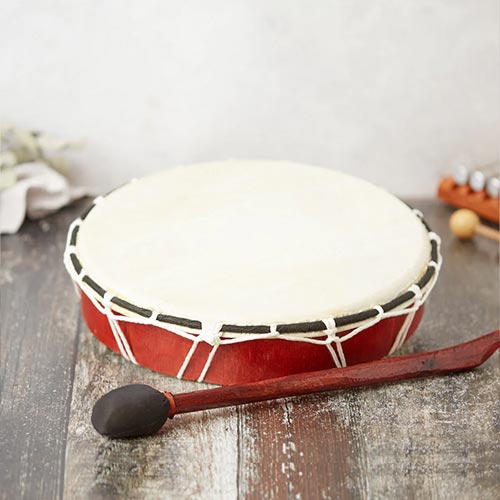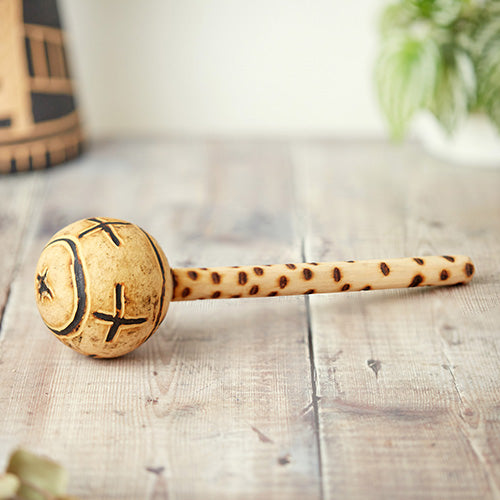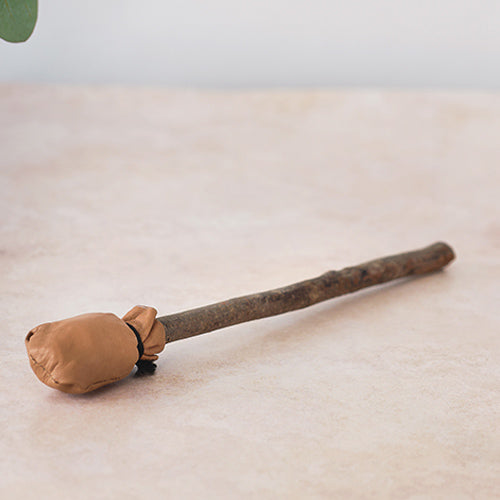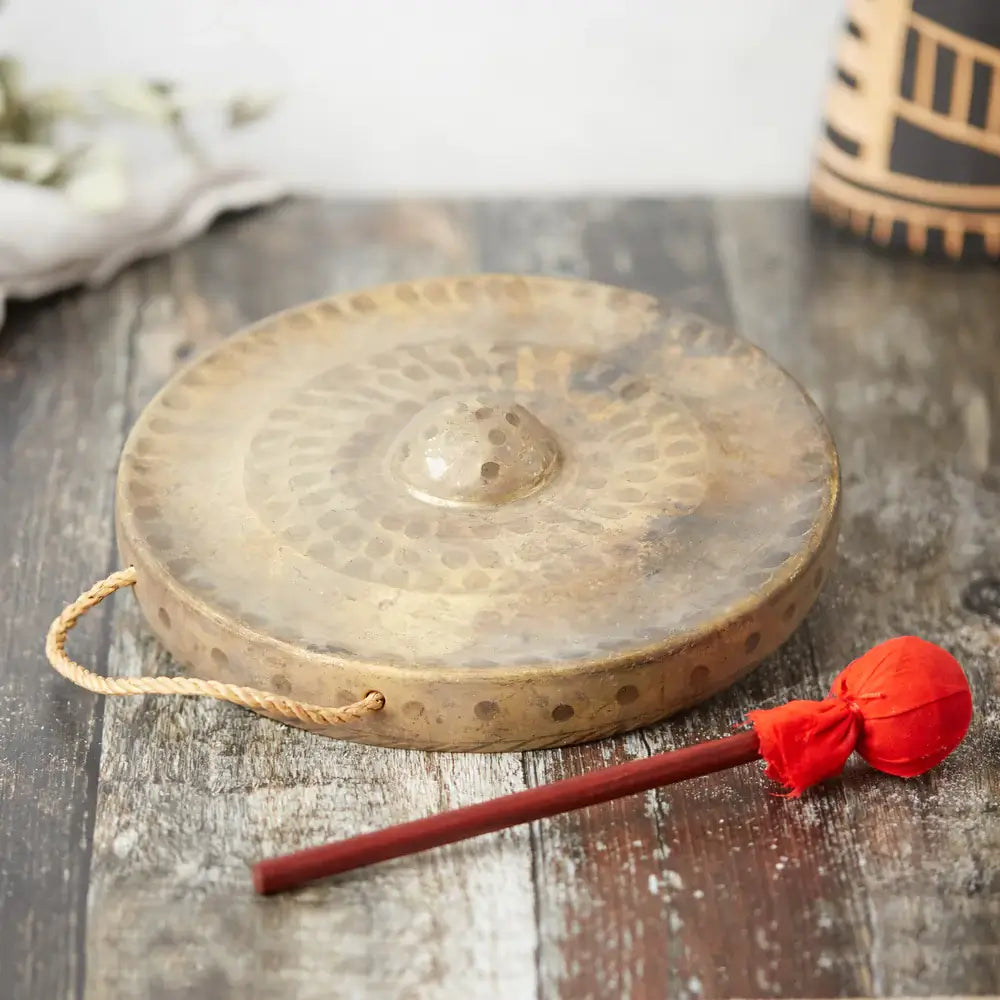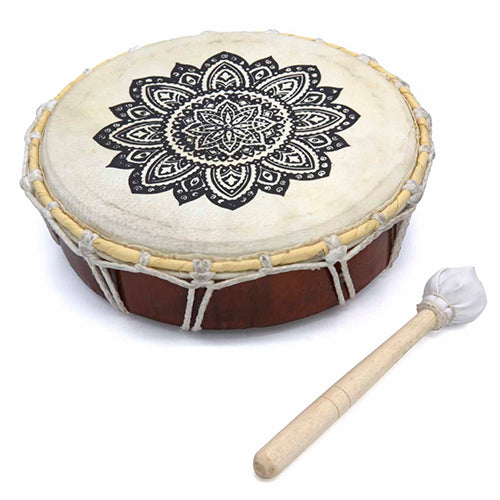In the world of Shamanic drums there are many factors that will affect your buying decisions, one of the most notable elements that impact your choice will be the size. Throughout this post we are going to be looking specifically on the three different size options that we offer - 37cm, 50cm, and the grand 60cm. These cowhide drums each offer a unique sound experience. Let's explore their distinct characteristics and see which one might resonate with you.
Khenji Compact Shamanic Drum (37cm)
Our journey begins with the 37cm Shamanic drum, the smallest in our lineup. Despite its compact size, this drum packs a punch in terms of resonance. The deep, rich tone it produces is magnificent, making it an ideal choice for those who appreciate a smaller, yet powerful instrument. It is easier to use, hold and move with than the other size drums.
You can buy the 37cm Shamanic drum here.
Khenji Shamanic Drum (50cm)

Moving on to the middle-sized option, the 50cm Shamanic drum strikes a balance between the compact 37cm and the larger 60cm. With a distinct resonance that differs from its smaller counterpart, this drum offers a unique sound experience. Ideal for those who seek a middle ground in terms of size and tone.
Explore the 50cm Shamanic drum here.
Khenji Grand Shamanic Drum (60cm)
Finally, we arrive at the grand 60cm Shamanic drum. As expected, the larger size contributes to a lower pitch and a profound resonance. If you are drawn to deep, grounding tones and appreciate a more significant instrument, the 60cm Shamanic drum might be the perfect choice for you.
Discover the large 60cm Shamanic drum here.
Choosing the drum for you
As we conclude our exploration of these Kenji Shamanic drums, the choice ultimately boils down to personal preference. Whether you are interested in the compact power of the 37cm drum, the balanced resonance of the 50cm, or the grandeur of the 60cm, each drum has its unique benefits. We hope this comparison has helped you in your quest for the perfect Shamanic drum.
Khenji Shamanic Drum (Comparison Video)
Khenji Shamanic Drum (Frequently Asked Questions)
How is a Khenjii Shamanic Drum different from other drums?
Khenjii Shamanic Drums often have distinctive features such as intricate designs, symbols, or carvings representing spiritual motifs and cultural significance. They are crafted with specific materials and techniques passed down through generations, giving them unique tonal qualities and spiritual resonance.
What materials are used to make a Khenjii Shamanic Drum?
Khenjii Shamanic Drums are traditionally crafted using natural materials sourced from the environment. This includes wooden frames made from sturdy, resonant woods such as oak or cedar, and drumheads made from animal hides like deer, elk, or buffalo. The hides are typically treated and stretched over the frame to produce the desired sound.
How do you play a Khenjii Shamanic Drum?
Playing a Khenjii Shamanic Drum involves a combination of techniques such as hand drumming, striking with a mallet, or using a beater to produce rhythmic patterns and sounds. The drummer may also incorporate chanting, singing, or other vocalizations to enhance the ceremonial experience.
How do I care for and maintain a Khenjii Shamanic Drum?
Proper care and maintenance are essential to preserve the integrity and sound quality of a Khenjii Shamanic Drum. This includes storing it in a dry, moderate environment away from direct sunlight or extreme temperatures, periodically tightening the drumhead to maintain tension, and conditioning the hide with natural oils to prevent drying or cracking. Additionally, respecting the drum as a sacred object and handling it with care during transportation and use is crucial.
Are Khenjii Shamanic Drums only used for ceremonial purposes, or can they be used for recreational music-making as well?
While Khenjii Shamanic Drums have deep spiritual and ceremonial significance in many cultures, they can also be used for recreational music-making and artistic expression. Modern practitioners and musicians may incorporate these drums into various musical genres, improvisations, and performances, while still honoring the cultural heritage and significance associated with the instrument.

